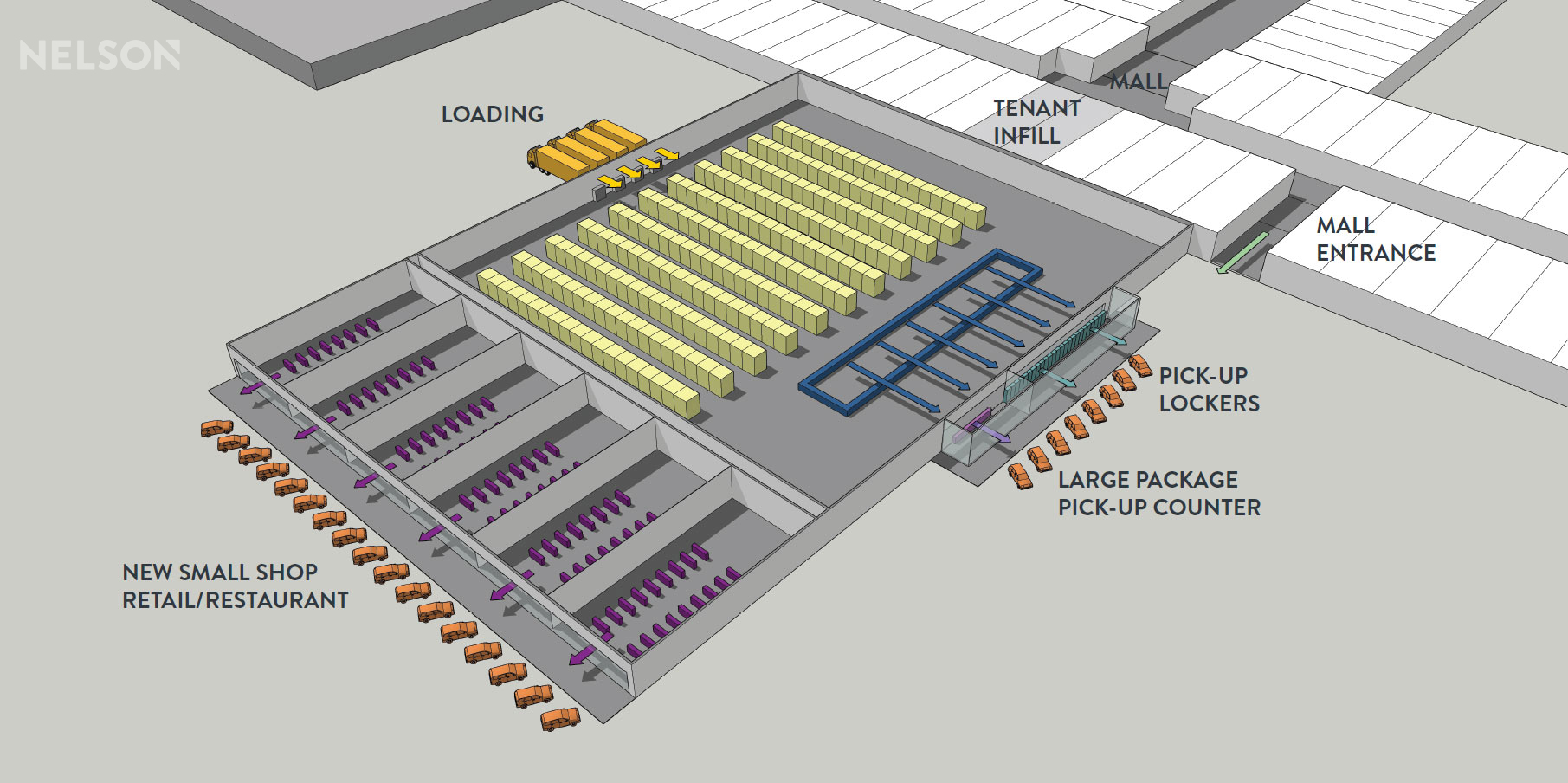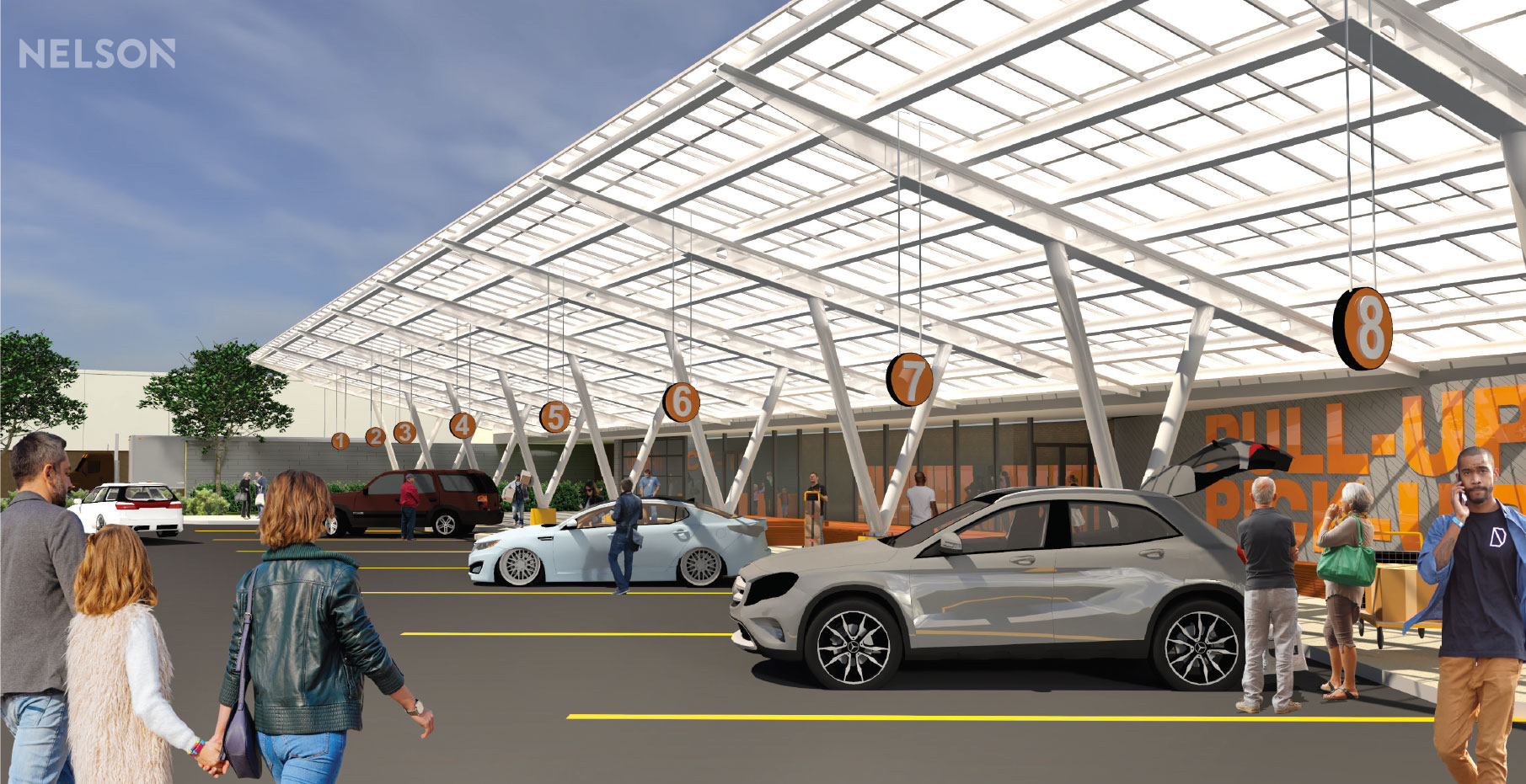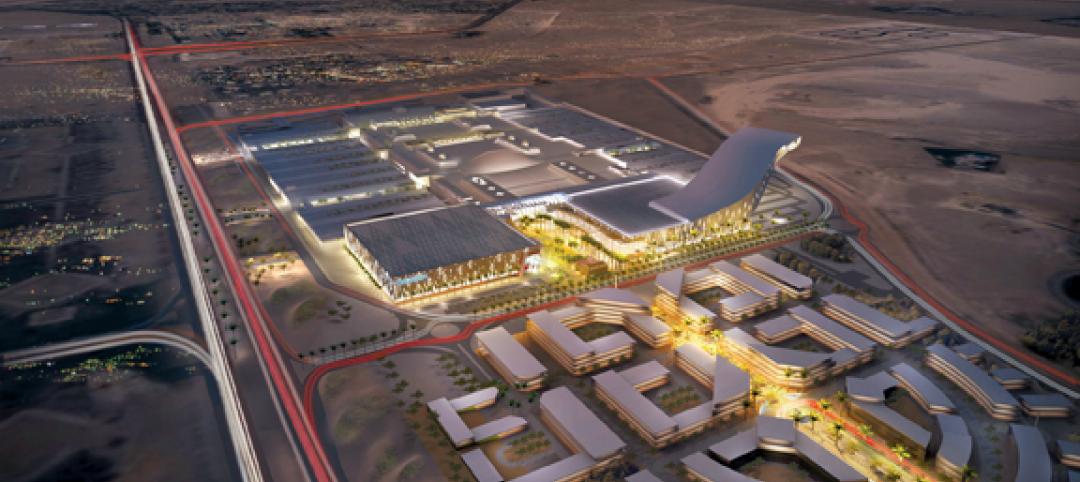Last month, one of the world's most well-known retailers filed for bankruptcy. Barneys is almost 100 years old and will close 15 of its 22 stores as part of a major restructure, and they aren’t alone. Barneys is among dozens of other retailers filing for bankruptcy this year. The question is, how do landlords transform this valuable empty space? The solution lies in repurposing existing square footage.
Brick-and-mortar environments can no longer offer consumers a singular purpose. Developments must be multi-functional destinations, hybrid facilities that support retail’s changing landscape and benefit the consumer, retailer, and the developer. The goal is to create physical environments that offer both a differentiated customer experience but also one that allows for faster product access.
With a national vacancy rate over 10% and a market that’s inundated with empty anchor space, the challenge will be to repurpose these once thriving mall beacons to become multi-purpose destinations that are both functional and still aesthetically pleasing for developers and remaining anchor tenants. The solution for dark anchors should not be to simply "plug the hole" with traditional solutions, but to look toward "out-of-the-box" concepts. A more innovative distribution center concept can offer a longer-lasting, versatile solution focusing on engagement, helping with supply chain, and better addressing today’s speed of transaction. The ideal repurposed distribution center offers three distinct uses.
First, is a warehouse “lite” facility offering last-mile delivery services – a smaller format transportation hub focusing on last-mile logistics to deliver items to the end user as fast as possible. The repurposed distribution center could leverage key elements from previous anchors, like the loading dock, receiving area and freight elevators. And keeping truck traffic to the backside of the development, ideally with a separate entrance, prevents a disruption to guest traffic flow.
Next, a robust click-and-collect facility, from parcel lockers to drive-through pick-ups, it will allow customers, as well as third-party delivery vendors, faster access to merchandise. This could also support newer concepts like cloud kitchens that rely on multiple delivery providers and a seamless pick-up process. Supporting new business-models from BOPIS to ridesharing, will keep the concept fresh and flexible, to support the growing ecommerce market.
 One solution for dark anchors is to convert them to warehouse “lite” facilities, which offer last-mile delivery services. The repurposed distribution center could leverage key elements from previous anchors, like the loading dock, receiving area and freight elevators. Rendering: NELSON
One solution for dark anchors is to convert them to warehouse “lite” facilities, which offer last-mile delivery services. The repurposed distribution center could leverage key elements from previous anchors, like the loading dock, receiving area and freight elevators. Rendering: NELSON
The third and final usage will be to leverage the street-facing facade for new, small format retail and restaurants. Providing unique localized offerings and a varied tenant mix will keep the development feeling current. These new consumer-facing environments should offer plenty of opportunities for consumer engagement and provide a new draw for legacy tenants within the development.
The refreshed exterior will help increase street traffic while creating an aesthetically pleasing façade to the much-needed back-of-house functions within the warehouse and click-and-collect environments. The small-format footprint could entice new offerings from start-ups to online-first retailers, providing developers and guests an elevated and differentiated experience.
This multi-faceted concept could support various industries beyond just traditional retail, such as breweries, beer distributers, and a consumer-facing beer garden or tasting room. With the rise of farm-to-table dining, it could be home to a grow house, farmers market, and signature-chef restaurant. Or even provide a footprint for cloud kitchens, a food truck park, and designated pick-up for food delivery apps. The options are endless when the concept supports consumers, ecommerce and supply chain.
Related content: In the age of Amazon there's nowhere to go but up
Moreover, many of today’s anchor spaces are large, unarticulated boxes that do not address today’s consumer needs and wants. The architecture is often forgettable and many of the exteriors haven’t been renovated since the original tenant opened their doors. This strategy may have been appropriate when most shopping centers were inward facing, enclosed malls, but today’s shoppers are looking for differentiated environments that not only speak to their unique communities, but also support their online habits to offer a more seamless, convenient experience.
So, while shopping centers have been turning inside out, replacing long stretches of back of house exterior walls with engaging outward facing tenant facades, the market has now created an opportunity for anchors to participate in this transformation.
This revolution starts with converting these unarticulated boxes into vibrant offerings that are approachable and engaging. Implementing a hybrid anchor solution provides a win for consumers, retailers, and developers, and will keep the space flexible for innovative new business models and functional for last-mile delivery opportunities. A new concept that merges experience with instant gratification to bring malls into the 21st century.
About the Author
Eric Arter leads the Mixed-Use studio at NELSON where he oversees a multi-disciplinary team serving both domestic and international clients including Simon, Brookfield, Unibail-Rodamco-Westfield, Macerich, Washington Prime Group, Cordish, Lotte and Hyundai Development Company. Eric has over 20 years of experience in mixed-use, retail, office, multifamily, hospitality, restaurant and entertainment projects as well as a background in institutional and industrial projects. Eric’s comprehensive experience and well-rounded skill set provides a unique understanding in support of a collaborative project approach. Projects in which he has played a key role have been the recipient of many awards throughout his career including: AIA Design & Honor Awards, NAIOP Awards and design competitions. Eric earned his Bachelor of Architecture degree from the University of Cincinnati. He is a registered architect, a member of the AIA, ICSC and he is a LEED accredited professional.
Related Stories
| Feb 11, 2011
Green design, white snow at Egyptian desert retail complex
The Mall of Egypt will be a 135,000-sm retail and entertainment complex in Cairo’s modern 6th of October district. The two-story center is divided into three themed zones—The City, which is arranged as a series of streets lined with retail and public spaces; The Desert Valley, which contains upscale department stores, international retailers, and a central courtyard for music and other cultural events; and The Crystal, which will include leisure and entertainment venues, including a cinema and indoor snow park. RTKL is designing the massive complex to LEED Silver standards.
| Jan 25, 2011
AIA reports: Hotels, retail to lead U.S. construction recovery
U.S. nonresidential construction activity will decline this year but recover in 2012, led by hotel and retail sectors, according to a twice-yearly forecast by the American Institute of Architects. Overall nonresidential construction spending is expected to fall by 2% this year before rising by 5% in 2012, adjusted for inflation. The projected decline marks a deteriorating outlook compared to the prior survey in July 2010, when a 2011 recovery was expected.
| Jan 21, 2011
Harlem facility combines social services with retail, office space
Harlem is one of the first neighborhoods in New York City to combine retail with assisted living. The six-story, 50,000-sf building provides assisted living for residents with disabilities and a nonprofit group offering services to minority groups, plus retail and office space.
| Jan 21, 2011
Revamped hotel-turned-condominium building holds on to historic style
The historic 89,000-sf Hotel Stowell in Los Angeles was reincarnated as the El Dorado, a 65-unit loft condominium building with retail and restaurant space. Rockefeller Partners Architects, El Segundo, Calif., aimed to preserve the building’s Gothic-Art Nouveau combination style while updating it for modern living.
| Jan 19, 2011
Baltimore mixed-use development combines working, living, and shopping
The Shoppes at McHenry Row, a $117 million mixed-use complex developed by 28 Walker Associates for downtown Baltimore, will include 65,000 sf of office space, 250 apartments, and two parking garages. The 48,000 sf of main street retail space currently is 65% occupied, with space for small shops and a restaurant remaining.
| Jan 7, 2011
BIM on Target
By using BIM for the design of its new San Clemente, Calif., store, big-box retailer Target has been able to model the entire structural steel package, including joists, in 3D, chopping the timeline for shop drawings from as much as 10 weeks down to an ‘unheard of’ three-and-a-half weeks.
| Jan 7, 2011
Mixed-Use on Steroids
Mixed-use development has been one of the few bright spots in real estate in the last few years. Successful mixed-use projects are almost always located in dense urban or suburban areas, usually close to public transportation. It’s a sign of the times that the residential component tends to be rental rather than for-sale.
| Jan 4, 2011
Grubb & Ellis predicts commercial real estate recovery
Grubb & Ellis Company, a leading real estate services and investment firm, released its 2011 Real Estate Forecast, which foresees the start of a slow recovery in the leasing market for all property types in the coming year.
| Dec 17, 2010
Vietnam business center will combine office and residential space
The 300,000-sm VietinBank Business Center in Hanoi, Vietnam, designed by Foster + Partners, will have two commercial towers: the first, a 68-story, 362-meter office tower for the international headquarters of VietinBank; the second, a five-star hotel, spa, and serviced apartments. A seven-story podium with conference facilities, retail space, restaurants, and rooftop garden will connect the two towers. Eco-friendly features include using recycled heat from the center’s power plant to provide hot water, and installing water features and plants to improve indoor air quality. Turner Construction Co. is the general contractor.
| Dec 17, 2010
Toronto church converted for condos and shopping
Reserve Properties is transforming a 20th-century church into Bellefair Kew Beach Residences, a residential/retail complex in The Beach neighborhood of Toronto. Local architecture firm RAWdesign adapted the late Gothic-style church into a five-story condominium with 23 one- and two-bedroom units, including two-story penthouse suites. Six three-story townhouses also will be incorporated. The project will afford residents views of nearby Kew Gardens and Lake Ontario. One façade of the church was updated for retail shops.















